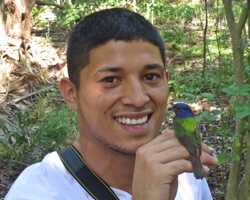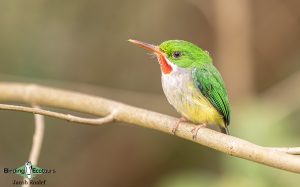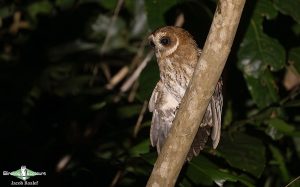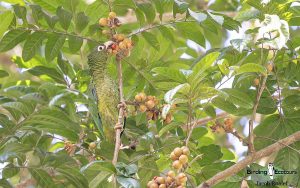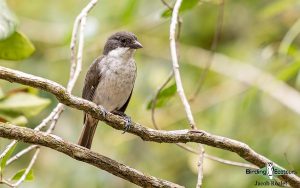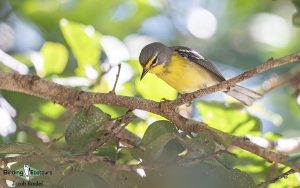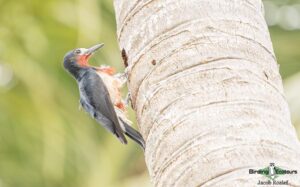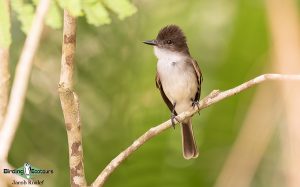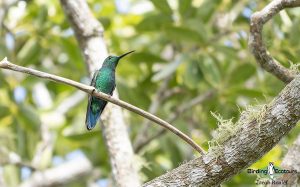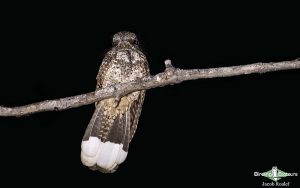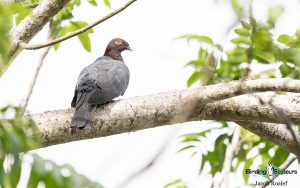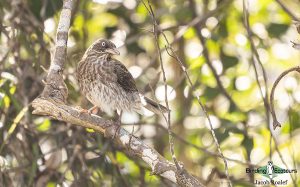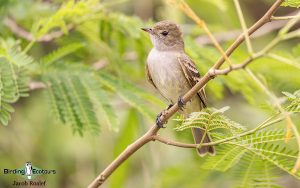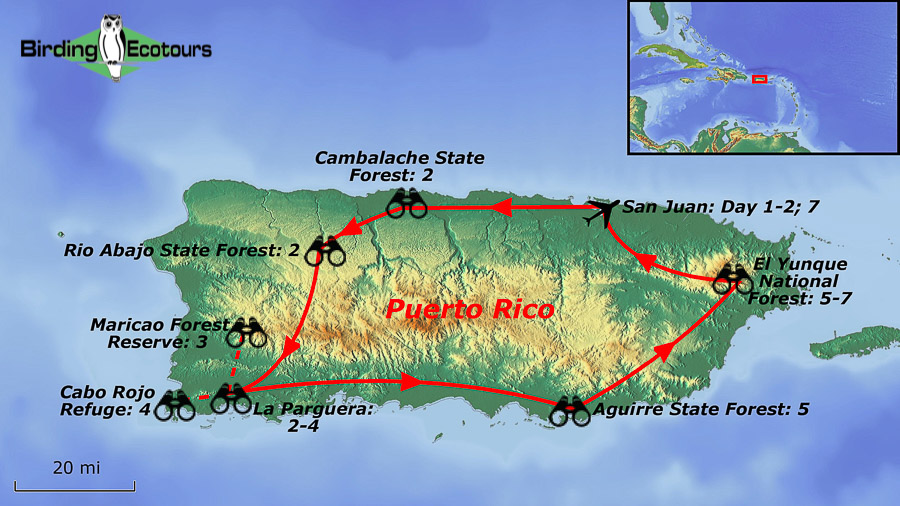Birding Tour Caribbean: Puerto Rico Escape – Endemics and Island Birding
Go to: Dominican Republic Birding Tours | Jamaica Birding Tour | USA Birding Tours | Birding Tours in North America | Birding Tours in Neotropics | All our birding tours
Birding Tour Caribbean: Puerto Rico Escape –
Endemics and Island Birding
March 2025/2026
Puerto Rico, the smallest and eastern-most island of the Greater Antilles, is full of beauty and amazing avian species. Surrounded by the gorgeous blues, turquoises, and greens of the warm Caribbean waters, this island features a multitude of habitats from highland forests to coastal wetlands. Puerto Rico is often overlooked when it comes to the larger islands in the Greater Antilles. However, this island has so much to offer! With 17 endemic bird species plus a host of other great Caribbean specials, Puerto Rico is a birder’s paradise. These amazing species include Puerto Rican Tody, Puerto Rican Owl, Puerto Rican Lizard Cuckoo, and Adelaide’s Warbler. Four of the endemics are currently red listed by the International Union for Conservation of Nature (IUCN). These include Puerto Rican Nightjar (Endangered), Yellow-shouldered Blackbird (Endangered), Elfin Woods Warbler (Endangered), and Puerto Rican Amazon (Critically Endangered).
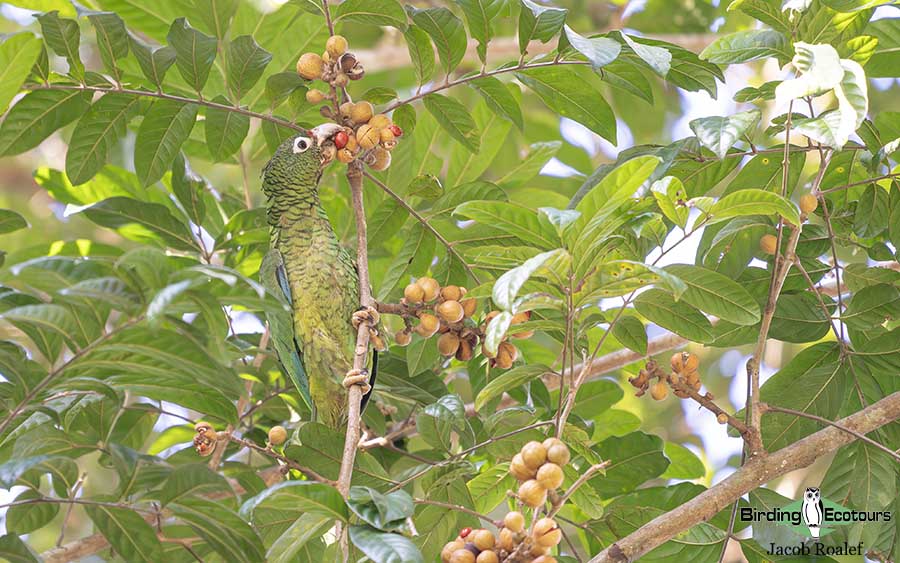
This tour takes us on a great adventure circling the entire island of Puerto Rico. Many species are specialized in certain regions of Puerto Rico, so it is important we visit all corners and spend enough time there to target them. We will begin in San Juan in the northeast section of the island. From here we will transfer across the northern coastline and down the western edge to the more relaxed town of La Parguera, stopping at places such as Rio Abajo State Forest and Maricao Forest Reserve. We will stay here for three nights, birding this area which hosts many key species. Next, we will traverse the southern coastline into El Yunque National Forest where we will stay for the final two nights of the trip. Here we will explore the southeast and eastern reserves of the island including Humacao Nature Preserve and the small town of Fajardo. Finally, we will wrap back to San Juan for the trip’s conclusion and departure home.
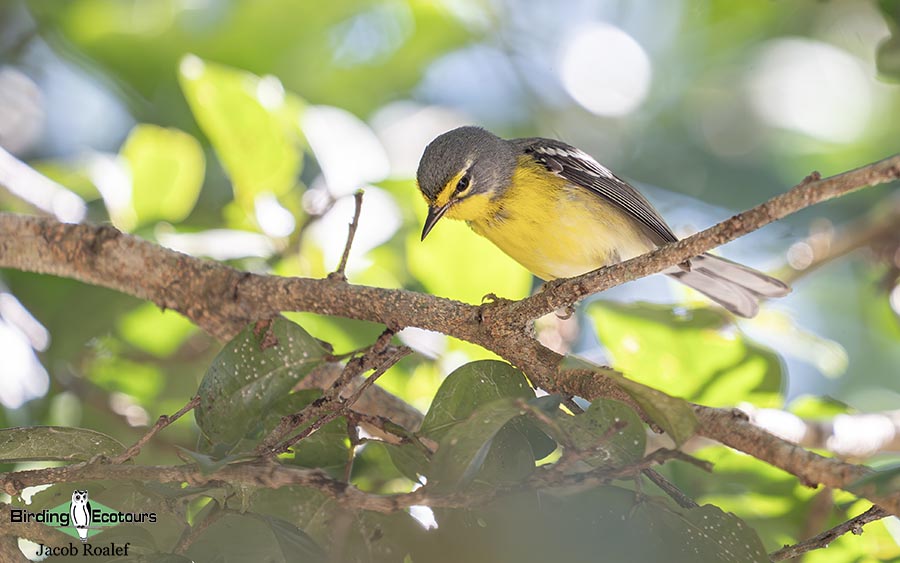
We offer other great tours to the Caribbean region including Cuba, Dominican Republic, and Jamaica. All of these destinations may be combined with Puerto Rico to give a more complete exploration of the Caribbean! Please don’t hesitate to ask any questions.
Itinerary (7 days/6 nights)
Day 1. Arrival in San Juan, Puerto Rico
After arrival at San Juan International Airport (SJU), you will be transferred to the hotel where a room will be reserved in your name. Some folks may want to arrive earlier in the day and explore the town of Old San Juan, full of historic buildings and culture. Some common species are likely to be encountered more casually after arriving such as Magnificent Frigatebird, Grey Kingbird, White-winged Dove, and Bananaquit. We will gather in the lobby and head to dinner for more proper introductions and we will discuss the details of our week on the beautiful island of Puerto Rico.
Overnight: San Juan
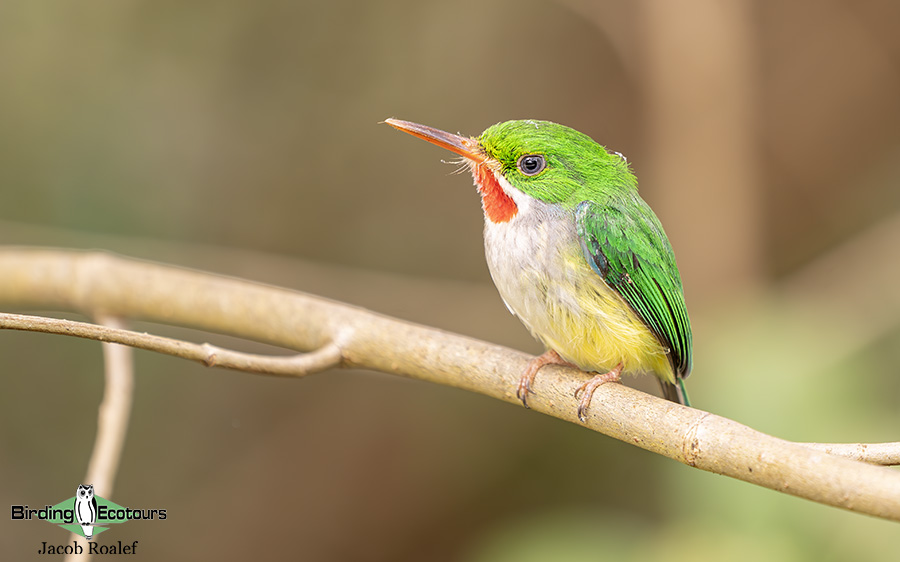
Day 2. Northeast to southwest – Rio Abajo State Forest and Cambalache State Forest
We will start off early this morning leaving the San Juan area behind and begin heading across the island. Our first morning stop will be at Cambalache State Forest, a beautiful lowland forest loaded with endemic birds. A productive morning can yield up to half of the island endemics and this area is a favorite spot for Puerto Rican Bullfinch, Puerto Rican Lizard Cuckoo, Puerto Rican Spindalis, Adelaide’s Warbler, and Puerto Rican Tody. In addition to the endemics, these trails are normally full of other great species such as Bananaquit, Black-faced Grassquit, Black-whiskered Vireo, and Smooth-billed Ani, to name a few.
From here we will move onto Rio Abajo State Forest which is absolutely our best site for spotting the Critically Endangered Puerto Rican Amazon (Parrot). Access to known nesting areas is not always possible due to the strict management of these birds and recent weather conditions such as hurricanes. We should hopefully be able to see some of the fine work going on in this park, aiding the conservation of these amazing birds. After exploring these two remarkable locations, we will make it to the small town of La Parguera for the evening where we will set up for the next three nights. This area is one of the last strongholds for Yellow-shouldered Blackbird and perhaps we will come across one as we get into town.
Overnight: La Parguera
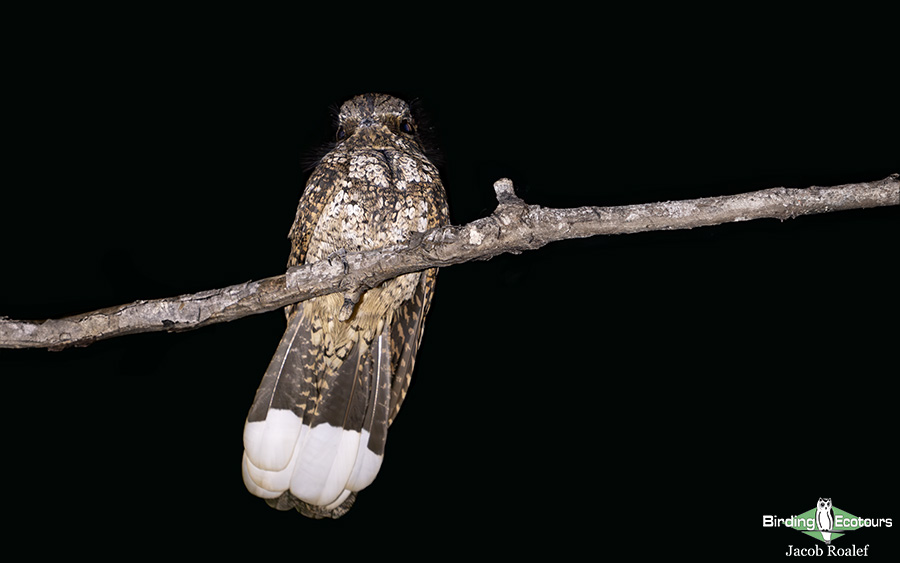
Day 3. Maricao Forest Reserve and Laguna Cartagena
After breakfast we head off to Maricao Forest Reserve, a wet mountain-forest area. Our top target here is the Endangered and range-restricted Elfin Woods Warbler. This elusive species was only discovered in 1968 and is restricted to high humidity, high altitude forests with elfin (dwarfed) trees. The trails here are an excellent place to find this fascinating bird as well as Puerto Rican Oriole, Scaly-naped Pigeon, and Puerto Rican Flycatcher. While the warbler may be the top target of the day, we will carefully search for the unique Puerto Rican Tanager, as this is a great area for it. This species is highly desirable to many listers as this unique bird is the only member of its genus and recently has been placed into its own family, Nesospingidae.
After lunch we will move on to explore Laguna Cartagena National Wildlife Refuge, located in the southwest corner of the island. This area and the nearby rice fields are fantastic for waders (shorebirds) and waterbirds. Here we will target specials such as Masked Duck and West Indian Whistling Duck. This site can also be great for other wetland species including Smooth-billed Ani, Black-necked Stilt, Sora, Common Gallinule and Glossy Ibis, plus a host of wintering warblers and some exotic species which have become established in Puerto Rico like Orange-cheeked Waxbill and Northern Red Bishop. We will return to La Parguera for dinner, always keeping our eyes peeled for Yellow-shouldered Blackbird. After dinner we will venture out in the evening in search of Puerto Rican Nightjar, located only in this region of the island.
Overnight: La Parguera
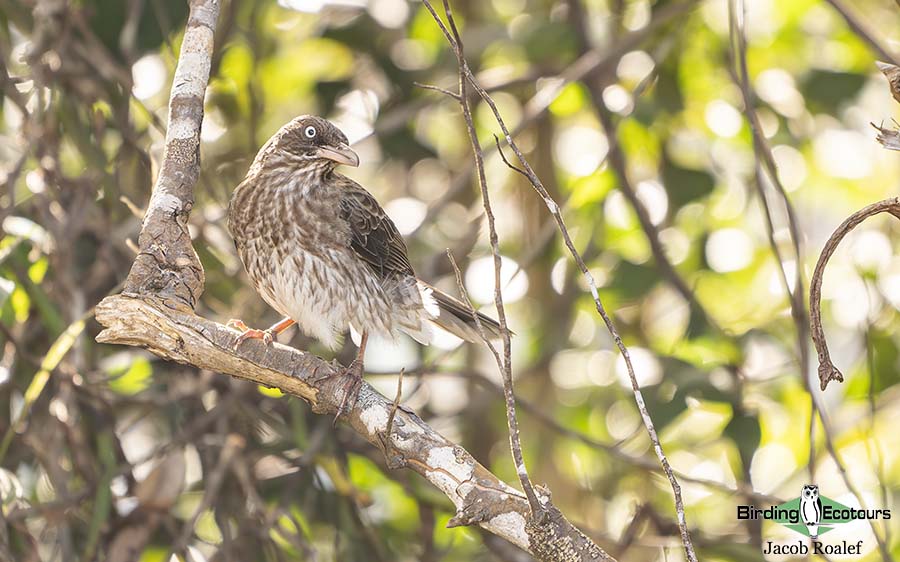
Day 4. Cabo Rojo and other southwest Puerto Rico birding
After breakfast we will head out to Cabo Rojo National Wildlife Refuge, a great location for seabirds and shorebirds. The mudflats here should be teeming with wintering species such as Wilson’s and Semipalmated Plovers, Black-necked Stilt, Least Sandpiper, and Royal Tern. We will head out to the lighthouse and scan the sea in hopes of spotting a White-tailed Tropicbird or Brown Booby flying close to shore. The trees in the area should be full of other great species like Caribbean Elaenia, Puerto Rican Flycatcher, Grey Kingbird, and the established exotic Venezuelan Troupial.
The afternoon will be a free one with our birding dependent on how we have faired with endemics and other Caribbean species thus far. Some folks may want to enjoy an afternoon around the town of La Parguera, certainly a fine and relaxing option. Others may want to venture out to other nearby birding locations for species such as Puerto Rican Woodpecker, Puerto Rican Vireo, Pearly-eyed Thrasher, Green Mango, Puerto Rican Emerald, and Puerto Rican Spindalis or any other species we may still be lacking. After dinner gives us another chance for Puerto Rican Nightjar and Puerto Rican Owl in case of a miss or bad weather the previous night.
Overnight: La Parguera
Day 5. Southern edge of Puerto Rico to El Yunque National Forest
This morning we will enjoy our final breakfast in the southwest portion of Puerto Rico before loading up and heading east across the island with a few birding stops planned. First up will be Aguirre State Forest, a coastal mangrove forest. Here is our first chance at spotting Antillean Crested Hummingbird plus other nice species including Mangrove Cuckoo, Prairie and Adelaide’s Warblers, and Pearly-eyed Thrasher. From here we will cut north through the center of Puerto Rico and into the mountains in search of the Near Threatened and range-restricted Plain Pigeon. We will also keep our eyes peeled for any endemics we might be missing at this point, if any, such as Green Mango and Puerto Rican Spindalis. In the afternoon, we will enjoy a relaxing walk around our lodging in El Yunque National Forest, full of scenic trails and waterfalls.
Overnight: Casa Cubuy
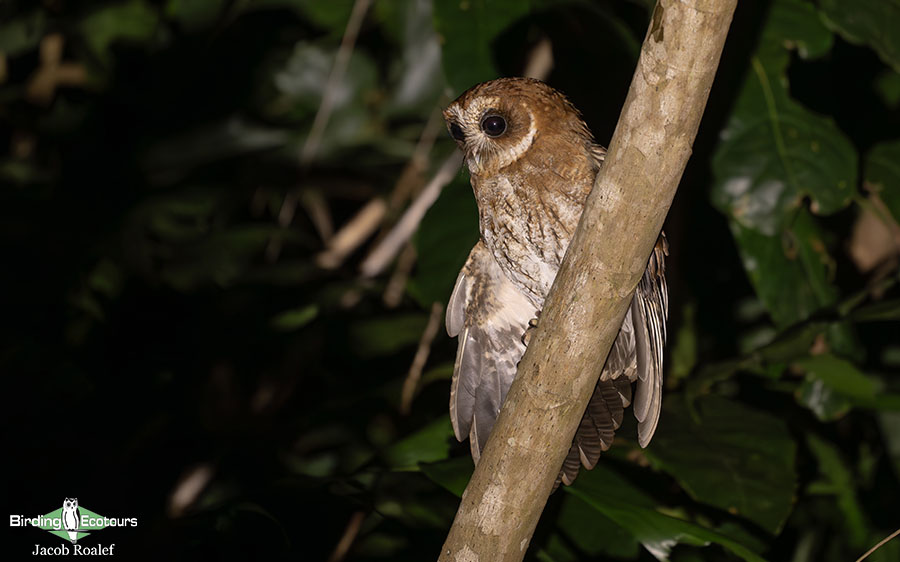
Day 6. Humacao Nature Preserve to Fajardo
After breakfast we will head off to Humacao Nature Preserve, a great area of wetlands and flowering trees, typically loaded with birds. Here we will search for both Green-throated Carib and Antillean Crested Hummingbird which are mostly restricted to the eastern areas of the island. Unfortunately, they have become scarcer due to recent hurricanes that have swept through Puerto Rico. In addition to the hummers, we will be on the lookout for other great species including White-cheeked Pintail, Puerto Rican Flycatcher, and Mangrove Cuckoo. From here we will head to the town of Fajardo for lunch next to the ocean. Here we will continue searching for those two hummingbirds and will scan the sea for Magnificent Frigatebird and Brown Booby.
In the afternoon we will head back to El Yunque to continue birding the trails around our lodge hopefully digging up nice species including Loggerhead Kingbird (Puerto Rican subspecies), Red-legged Thrush, and Puerto Rican Tanager. The evening will provide an optional outing for Puerto Rican Owl on our final night of the tour.
Overnight: Casa Cubuy
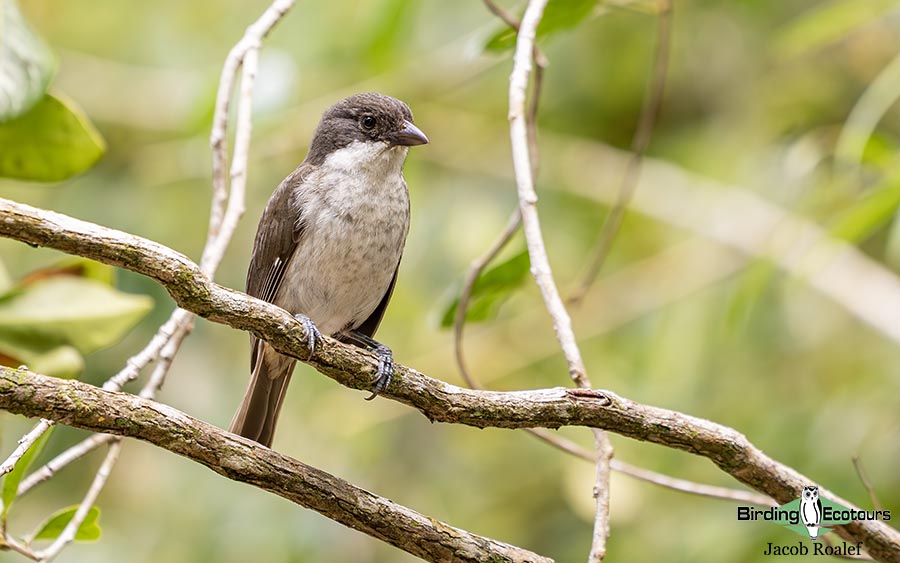
Day 7. Departure from San Juan
After breakfast, and potentially some morning birding, we will load up and head back to the San Juan Airport to catch flights home. We strongly recommend flights departing after noon to allow enough time to transfer to the airport (approx. 1hr 15min drive). This will be the final trek on what was surely an amazing week spent in the paradise of Puerto Rico!
Be sure to check out our other tours in the Caribbean region, easily combinable with this one: Dominican Republic – Complete DR Experience and Jamaica – Island Endemics in the Heart of the Caribbean.
Please note that the itinerary cannot be guaranteed as it is only a rough guide and can be changed (usually slightly) due to factors such as availability of accommodation, updated information on the state of accommodation, roads, or birding sites, the discretion of the guides, and other factors. In addition, we occasionally need to use a different international guide from the one advertised due to tour scheduling.
Download ItineraryCaribbean – Puerto Rico: Set Departure Trip Report, February 2024
23 – 29 FEBRUARY 2024
By Jacob Roalef
DOWNLOAD TRIP REPORT
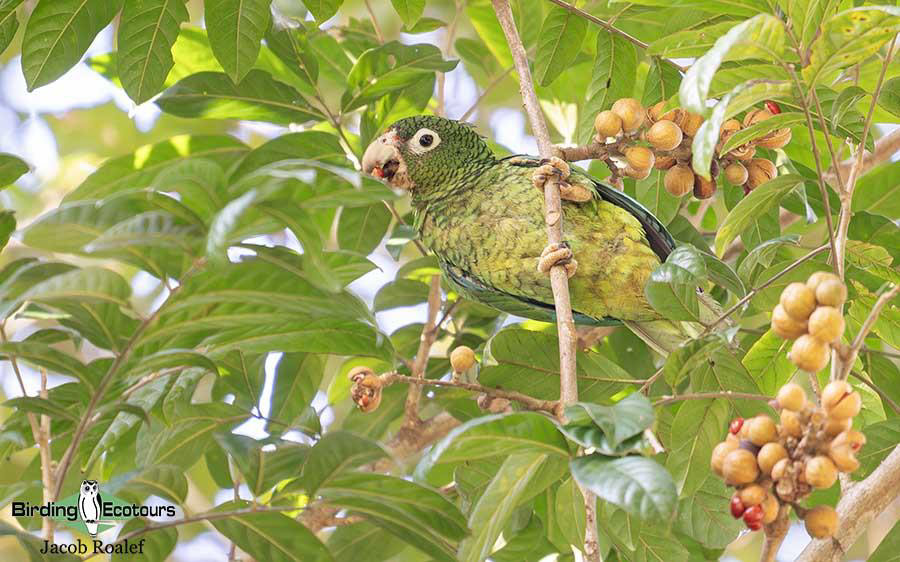
We enjoyed this Puerto Rican Amazon as it ate breakfast.
Overview
This seven-day birding adventure of the “La Isla del Encanto” circled the entire island of Puerto Rico and explored many of the amazing birding and natural areas on offer. We began in San Juan and headed west across the northern shore, with dips into the interior to visit Bosque Estatal de Rio Abajo and Bosque Estatal de Cambalache, then south along the western shore and ended up in La Parguera. From here we explored the southwest portion of Puerto Rico as we visited Bosque Estatal de Maricao, Cabo Rojo salt flats, Laguna Cartagena National Wildlife Refuge, and Bosque Estatal de Susua. From here we headed east across the southern coast of Puerto Rico and ended up on the southern edge of El Yunque National Forest for two nights. We explored this amazing tropical rainforest as well as some coastal habitats along Roosevelt Roads before heading back to San Jaun to conclude the trip and complete our circle of the island.
The birding was a huge success as we scored on all the endemic species as well as the other Caribbean specials. These included Puerto Rican Amazon, Puerto Rican Tody, Puerto Rican Lizard Cuckoo, Yellow-shouldered Blackbird, Puerto Rican Tanager, West Indian Whistling Duck, Plain Pigeon, Puerto Rican Owl, and Elfin Woods Warbler. In addition to these special species, we enjoyed many resident, wintering, migrant, and even some established exotics that have a more widespread range, such as Smooth-billed Ani, Purple Gallinule, Wilson’s Plover, Magnificent Frigatebird, Grey Kingbird, and Venezuelan Troupial.
A total of 123 bird species were seen with one more heard only, bringing our total recorded to 124 species for the trip. As is often the case with islands, very few mammals are possible, and Puerto Rico is no exception. Only one mammal species was encountered on the trip, the Small Indian Mongoose. Full bird and mammal checklists can be found at the end of the report.
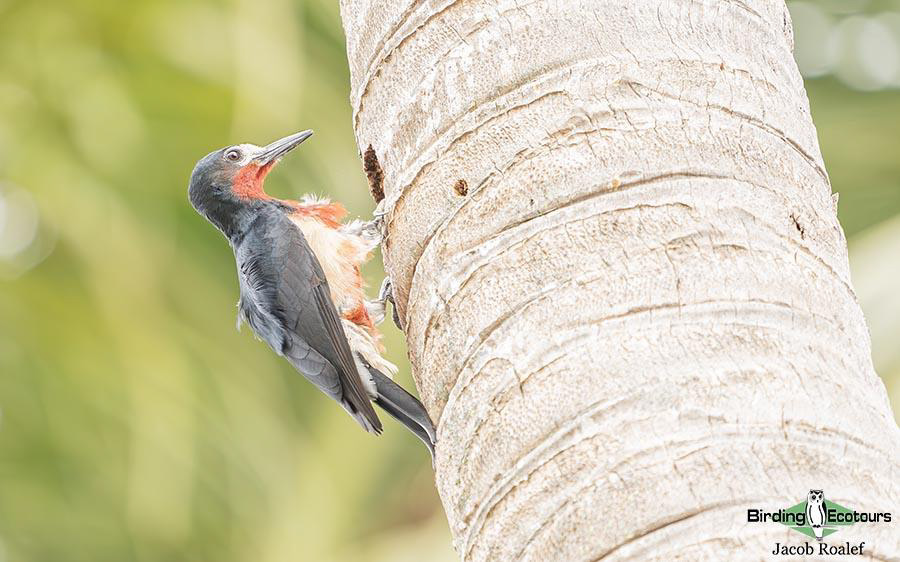
Puerto Rican Woodpecker was nearly a daily occurrence for our group.
Detailed Report
Day 1, 23rd February 2024. Arrival and San Juan Central Park
All participants arrived on the same mid-afternoon flight and were met by Jacob at the airport, before being transferred to the hotel for check-in. After a brief rest to recover from the flight, with two hours until dinner, we headed off to San Juan Central Park for our first taste of Puerto Rican birding. This extra birding provided an excellent opportunity for some study of the more common species on the island, like Zenaida Dove, Red-legged Thrush, Pearly-eyed Thrasher, and Bananaquit. We quickly got onto a group of Monk Parakeets in the treetops, where a single White-winged Parakeet was picked out as well. We continued our pleasant walk in the park and stacked up more species, including our first endemic, Puerto Rican Woodpecker, as well as White-crowned Pigeon, White-winged Dove, Magnificent Frigatebird, and Black-faced Grassquit. We decided to stake out a nice flowering tree for hummingbirds, this proved fruitful as a Green-throated Carib made a few brief appearances. Our lovely birding introduction was now complete, and we headed back to the hotel for dinner and proper group introductions and to discuss the trip ahead.
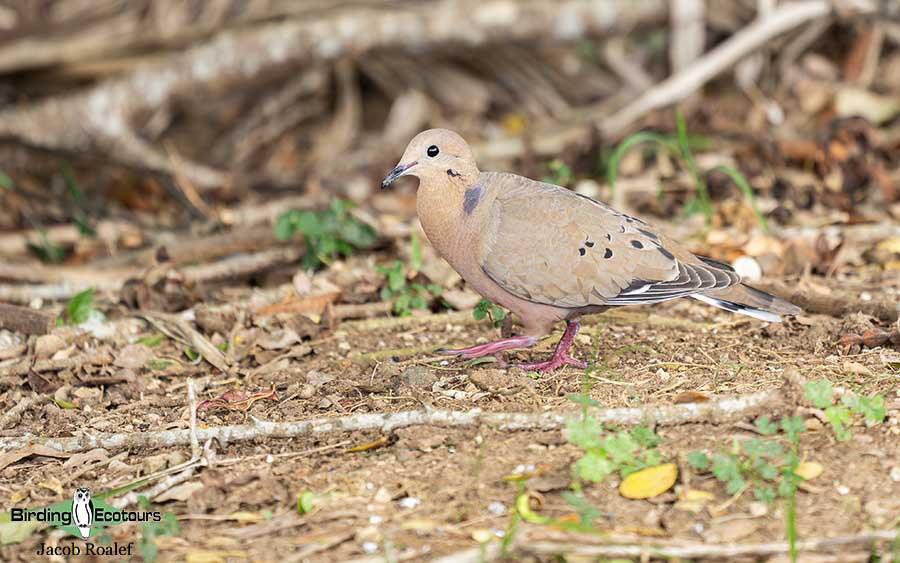
It was great to get familiar with Zenaida Dove at San Juan Central Park.
Day 2, 24th February 2024. Rio Abajo and Cambalache State Forests.
Today was an early morning to beat the traffic and get in position for our first target near sunrise, so we loaded up the vehicle and left San Juan. After a quick stop for coffee and breakfast, we pulled into the parking area of Rio Abajo just after sunrise. We unloaded from the vehicle, started up the trail, and were greeted by Bananaquit, Scaly-naped Pigeon, and Black-whiskered Vireo. A little further up the trail we had our first encounter with the adorable Puerto Rican Tody, a species one can never get tired of seeing. All of these were great birds, however, our focus this morning was parrots, so we continued hiking up the trail. Suddenly, we all heard the loud and unmistakable calls of a group of parrots, and we quickly hurried up the trail to a section with a more open view. Several Puerto Rican Amazons flew overhead and moved back and forth along the canopy. We eventually spotted one foraging in the trees and had some excellent viewing opportunities. Huge success with this Critically Endangered species. While we watched these incredible birds, we picked up several other great species, such as Lesser Antillean Pewee, Puerto Rican Vireo, and Puerto Rican Emerald. It was time to say goodbye and good luck to the parrots, so we turned and birded our way back to the vehicle. On the way back we scored three more endemic species, Puerto Rican Bullfinch, Adelaide’s Warbler, and Puerto Rican Lizard Cuckoo,as well as the endemic subspecies of Broad-winged Hawk! A fantastic start to our trip.

Adelaide’s Warbler was seen on several days of the trip.
It was now late morning, so we headed back to the café to pick up some lunch for a picnic at our next destination, Cambalache State Forest. We enjoyed a quick bite to eat here and birded around the grounds, but it was a bit quiet at this time of day. Despite the lack of birds, we did score an Indigo Bunting and Mangrove Cuckoo as new species for our trip. We loaded back into the vehicle and did some birding around some local towns and little ponds in the area. This proved to be very fruitful, and we ticked loads of new species, like White-cheeked Pintail, Loggerhead Kingbird, Bronze Manakin, Yellow-faced Grassquit, Little Blue Heron, Wilson’s Snipe, Glossy Ibis, and the top highlight of the area, West Indian Whistling Duck. After a great day of birding, we had a long drive ahead of us to the southwest corner of the island and our next hotel, in La Parguera.
We made one quick stop at the Guajataca Cliffs, which didn’t offer much besides a pretty view of the ocean. After arrival at our hotel, we checked in, dropped off our bags, and headed back out to Playita Rosada. Here we managed to hear several Puerto Rican Nightjars, but any visuals eluded us this evening. After one too many mosquito bites, we decided to call it a night and get some much-needed rest.
Day 3, 25th February 2024. Maricao State Forest and Laguna Cartagena
Today was another pre-dawn departure and we headed into town to grab some breakfast and coffee at what would become our go-to morning spot. After we filled up, we headed up the mountains to Maricao State Forest. The forest was alive with birds! We were greeted by some noisy Puerto Rican Lizard Cuckoos, Puerto Rican Orioles, and Pearly-eyed Thrashers. It wasn’t long before we were on the unique Puerto Rican Tanager, a monotypic family. We watched a small family of three birds chase each other around all morning. All this bird action was just around the parking area! We hiked up the hill a little until the trees opened, revealing an incredible view of Puerto Rico below. From here we spotted a Lesser Antillean Pewee, which gave some excellent views, and a pair of Puerto Rican Euphonias. Despite all this incredible bird activity, we were still missing our top target, so we headed down a trail in hopes of discovery. Another Puerto Rican Tody made a brief appearance, and several Puerto Rican Bullfinches were calling, and then suddenly along the trail was an Elfin-Woods Warbler! The bird was close but always mostly hidden in the dense vegetation. With some patience, we all managed views of this secretive endemic warbler. We hiked back to our vehicle and the rain started coming down as we closed the door. Perfect timing after a perfect morning for birds.
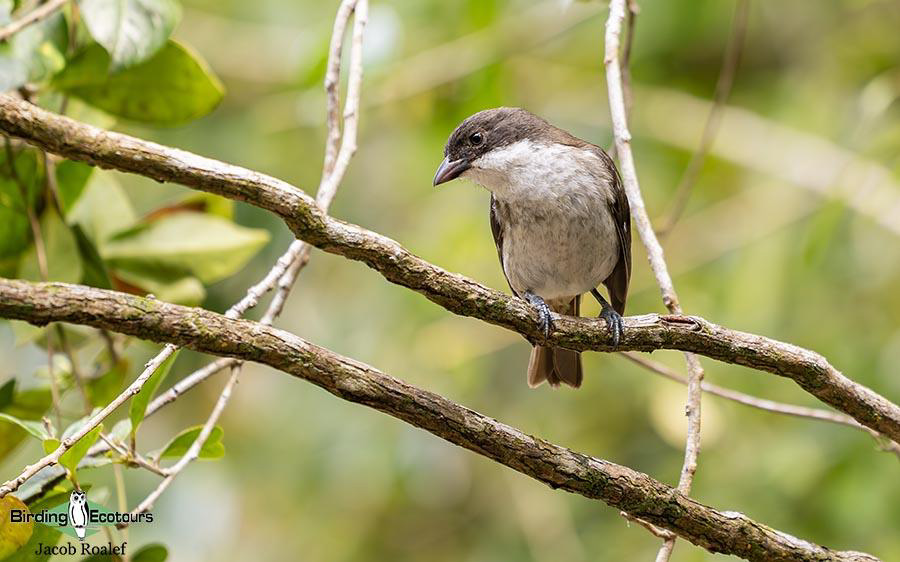
Puerto Rican Tanager is the sole member of its family and endemic.
From our mountain view we could see where it was raining, so we drove back down the mountain dodging the storms. After a quick stop to pick up food for lunch we headed out, desperate to get in as many birds as possible while not raining. We enjoyed our picnic-style lunch at a local pond that was loaded with water birds, like White-cheeked Pintail, Lesser Scaup, Ruddy Duck, Stilt Sandpiper, Black-necked Stilts, and Lesser Yellowlegs. A curious group of Smooth-billed Anis foraged in the fields behind us while we ate. Just down the road we got onto a group of the endangered and endemic, Yellow-shouldered Blackbird, another great species. We packed up and headed to our final birding stop of the evening, Laguna Cartagena. It began drizzling as we parked our vehicle, but we guessed the water birds wouldn’t mind, so we headed out. This freshwater marsh held many amazing species like Masked Duck, Purple Gallinule, Green Heron, Sora, and some of us even saw a Yellow-breasted Crake for a split second. On our way out, we spotted a very wet Merlin, waiting for the rain to stop.
After our dinner back in town, we changed and headed out for our optional bonus excursion, a boat ride and swim in one of the bioluminescent bays. This was an incredible experience, despite the brightness of the full moon. A great way to cap off our fantastic bird sightings.
Day 4, 26th February 2024. Cabo Rojo salt flats
After a few long days and early starts, today we enjoyed a little extra sleep before heading off. Our first stop after breakfast was the salt flats of Cabo Rojo, where we were greeted by a pair of American Kestrels next to the observation tower, as well as a very vocal Adelaide’s Warbler in the nearby bushes. Luckily the gate to the tower was open today, so we decided to climb up and scan from the top. Unfortunately, the tides were not very cooperative, so birds were slim at the top, nevertheless, we did manage to get our first Caribbean Elaenia for the trip. We descended the tower, grabbed some water to help with the heat, and then headed off for a short walk around the salt ponds. This proved to be much more fruitful, with a nice mixed flock, including American Yellow and Prairie Warblers, Venezuelan Troupial, Bananaquit, and the endemic Puerto Rican Flycatcher, a first for the trip! As we continued our walk, we approached the nearby water and picked up some water species such as Royal Tern, Great Blue Heron, Snowy Egret, Belted Kingfisher, and both Lesser and Greater Yellowlegs. By now we were well into mid-morning, and it was getting hot down in the coastal lowlands, so we headed back to the vehicle.
From here we continued towards the coast, in hopes of some shorebirds, sadly the road was blocked due to flooding. We hopped out and scanned along the road. This produced several excellent species like Hudsonian Whimbrel, Clapper Rail, Ruddy Turnstone, Black-bellied, Semipalmated, and Wilson’s Plovers, and Stilt Sandpiper. This was highly productive for our short stop in the heat. It was time to cool off, so we headed off for an hour’s drive north and picked up some lunch and tasty coffee. We enjoyed our drinks and food at the Punta Boca marina, where we watched a large group of Sandwich Terns, a distant Brown Booby and a Spotted Sandpiper as it worked along the rocky shore. We then headed back to the hotel to have a few hours’ break in the afternoon and heat of the day, before meeting again for dinner in town. After dinner, a few of us headed out to Playita Rosada again, to give the Puerto Rican Nightjar another chance. This time we managed to have great success and scored excellent views of one, while we heard several others. A great end to the day!
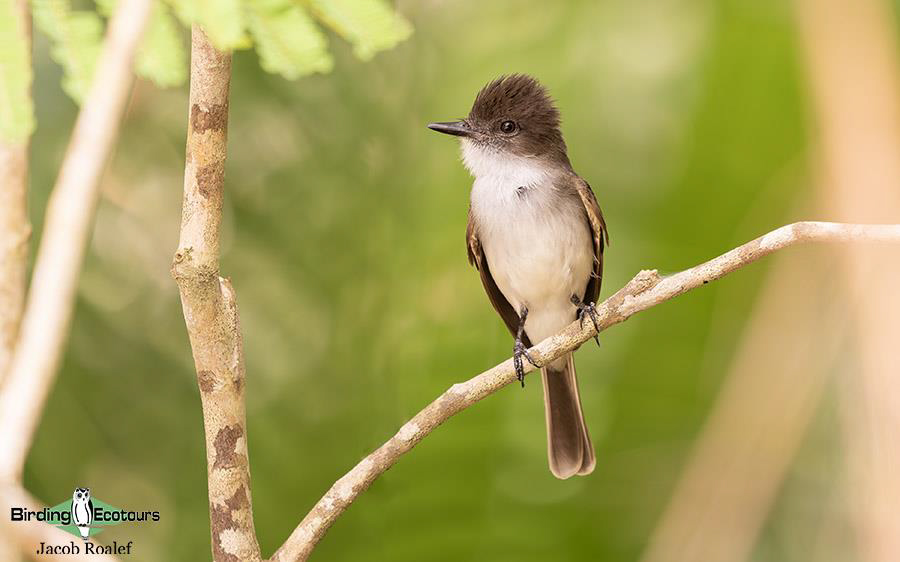
It was great to finally catch up with a Puerto Rican Flycatcher.
Day 5, 27th February 2024. Susua State Forest and coastal birding
After another tasty breakfast at our usual spot, we headed off to Susua State Forest, arriving right around opening time. Immediately upon exiting the vehicle we heard the elusive Key West Quail Dove, a top target for this area and a species that has become incredibly difficult since some recent hurricanes. Despite searching intensely for an hour and a half, we only managed to hear about five of these birds, never laying eyes on one, but it was still nice to hear so many. There were still other species to see, like Puerto Rican Vireo, Black-and-white Warbler, Pearly-eyed Thrasher, and Scaly-naped Pigeon. From here we had a long journey across the southern edge of the island to our next lodge but, of course, we had several stops planned along the way. The rain finally caught up with us at our next location, but it didn’t stop the little Antillean Crested Hummingbird from making several appearances, which we viewed from the dry vehicle. Eventually the rain began to die down and we pressed onwards.
The remainder of the afternoon was spent making several stops along the southern coast in search of more shorebirds and other waders. We managed to find a few new trip birds, including Tricolored Heron and American Oystercatcher, as well as other nice to see species like Black-bellied Plover, Ruddy Turnstone, Brown Booby, Royal Tern, and some excellent views of a Puerto Rican Woodpecker. We left the coastal areas and headed into the mountains to our lodge where we would spend the next few nights. After getting settled in, we headed back to town for a tasty dinner and to wait for darkness. Back at the lodge, we walked along the road a bit and, before long, we heard the calls of a Puerto Rican Owl. We hung around in the area and eventually managed some stellar views of this bird, the final endemic needed for the trip! It was time to rest and fall asleep to the sounds of the Coqui Frogs.

We managed some stellar views of Puerto Rican Owl near our lodge.
Day 6, 28th February 2024. Roosevelt Roads and Caguas urban birding
Since we had nailed the final endemic bird last night, this morning we ate a leisurely breakfast at our lodge, enjoying the amazing view and birds here. While we ate and sipped coffee, we noted Loggerhead Kingbird, Puerto Rican Spindalis, Puerto Rican Lizard Cuckoo, Puerto Rican Oriole, and of course, Bananaquit. After breakfast, we loaded up, headed down the mountain and back towards the coast. En route we ticked our first Scaly-breasted Munia of the trip near a river crossing, and eventually arrived at Roosevelt Roads. Our two-mile hike began with us walking through some forested and mangrove habitats, where we were treated to excellent views of Caribbean Elaenia, Adelaide’s Warbler, and Black-faced Grassquit. We had to work extremely hard before everyone managed views of the sneaky Northern Waterthrush. The brushy habitat opened to show off the expansive wetlands behind it. Here we scanned through loads of shorebirds and other wetland species for quite a while. A great variety was present, including White-cheeked Pintail, Little Blue Heron, Yellow-crowned Night-Heron, Semipalmated, Least, and Stilt Sandpipers, Willet, Short-billed Dowitcher, and Wilson’s Plover. Finally, after much scanning and waiting, three American Flamingos appeared along the very distant mangroves. It was getting quite hot, so we trekked back to the car.
We made a quick stop at the nearby store to get lunch, and then drove back up the mountain to enjoy our food and a short break at the lodge. As the afternoon turned into early evening, we loaded up and headed off to the town of Caguas to search for our final target of the trip. As evening approached and temperatures cooled, the bird activity picked up. We scoured the town and along the nearby river. While not finding our target, we did manage to see other nice birds, like Snowy Egret, Green Heron, and Scaly-naped Pigeon. We began losing faith in our quest, so hiked up a nearby hill to have a better view over the town below. Just as we were ready to call it quits, we turned around and boom, there it was, a Plain Pigeon perched nicely in the open! High fives were had all round, as well as some good laughs about celebrating a pigeon. We hiked back down and managed closer views, only to discover four different Plain Pigeons. It was now time for our final dinner together to celebrate a great trip and enjoy a scenic view from the mountain.
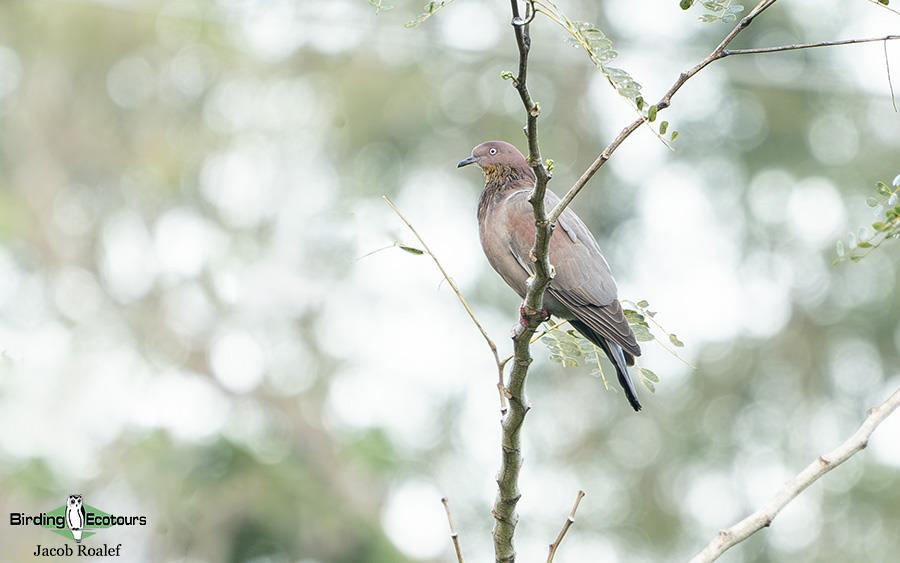
Our patience was rewarded with this awesome Plain Pigeon!
Day 7, 29th February 2024. El Yunque National Forest and Departure
On our final day, everyone had late afternoon flights home, so we still had a few hours to enjoy the island of enchantment. We started with another leisurely breakfast and enjoyed many of the same species from the previous morning, like Puerto Rican Oriole and Puerto Rican Spindalis. After some extra time to get properly packed for the airport and travel, we said goodbye to our lodge and headed back towards San Juan. Of course, we still had a few hours, so we had to make a stop at the El Yunque National Forest visitor’s center. It was a treat to learn more about the tropical rainforest here, about how recent hurricanes have impacted life here, and how quickly the forest can bounce back. We also had some close-up views of a few Puerto Rican Amazons that were part of the reintroduction and breeding program. After a proper exploration of the center, we hiked one of the nearby trails which showcased some of the local art and culture of Puerto Rico. On the hike we were treated to one final view of the adorable Puerto Rican Tody, a lovely farewell to what was a fantastic trip on this Caribbean island. It was then finally time to head off to the airport and say our goodbyes.
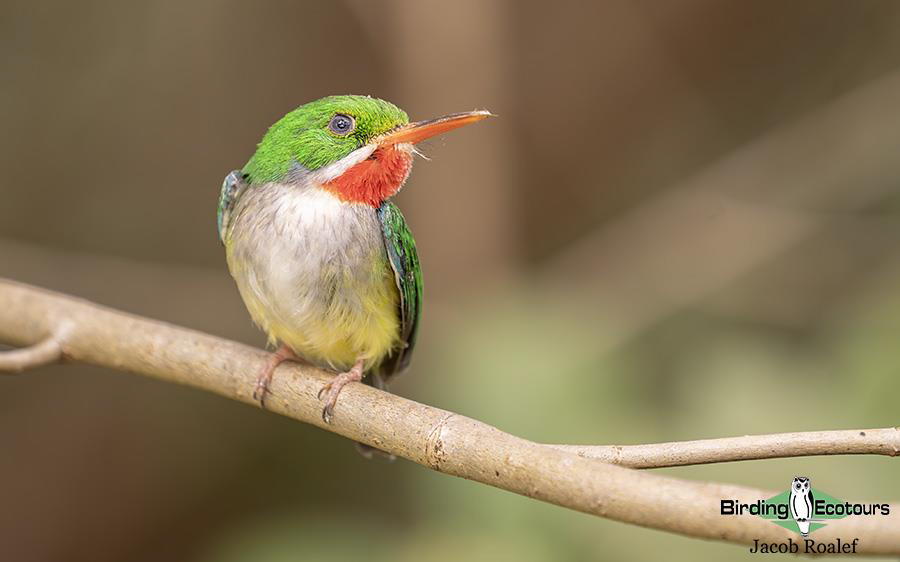
We all enjoyed seeing Puerto Rican Tody again on our final day.
Bird List – Following IOC (14.1)
Birds ‘heard only’ are marked with (H) after the common name, all other species were seen.
The following notation after species names is used to show conservation status following BirdLife International: CE = Critically Endangered, EN = Endangered, VU = Vulnerable.
| Common Name | Scientific Name |
| Ducks, Geese, and Waterfowl (Anatidae) | |
| West Indian Whistling Duck | Dendrocygna arborea |
| Muscovy Duck (Introduced) | Cairina moschata |
| Blue-winged Teal | Spatula discors |
| White-cheeked Pintail | Anas bahamensis |
| Lesser Scaup | Aythya affinis |
| Ring-necked Duck | Aythya collaris |
| Masked Duck | Nomonyx dominicus |
| Ruddy Duck | Oxyura jamaicensis |
| Pheasants, Grouse, and Allies (Phasianidae) | |
| Red Junglefowl (Introduced) | Gallus gallus |
| Hummingbirds (Trochilidae) | |
| Puerto Rican Mango | Anthracothorax aurulentus |
| Green Mango (Endemic) | Anthracothorax viridis |
| Green-throated Carib | Eulampis holosericeus |
| Puerto Rican Emerald (Endemic) | Riccordia maugaeus |
| Antillean Crested Hummingbird | Orthorhyncus cristatus |
| Cuckoos (Cuculidae) | |
| Smooth-billed Ani | Crotophaga ani |
| Mangrove Cuckoo | Coccyzus minor |
| Puerto Rican Lizard Cuckoo (Endemic) | Coccyzus vieilloti |
| Pigeons and Doves (Columbidae) | |
| Rock Dove (Introduced) | Columba livia |
| White-crowned Pigeon | Patagioenas leucocephala |
| Scaly-naped Pigeon | Patagioenas squamosa |
| Plain Pigeon | Patagioenas inornata |
| Eurasian Collared Dove (Introduced) | Streptopelia decaocto |
| African Collared Dove (Introduced) | Streptopelia roseogrisea |
| Common Ground Dove | Columbina passerina |
| Key West Quail-Dove (H) | Geotrygon chrysia |
| Mourning Dove | Zenaida macroura |
| Zenaida Dove | Zenaida aurita |
| White-winged Dove | Zenaida asiatica |
| Rails, Crakes & Coots (Rallidae) | |
| Clapper Rail | Rallus crepitans |
| Sora | Porzana carolina |
| Common Gallinule | Gallinula galeata |
| American Coot | Fulica americana |
| Purple Gallinule | Porphyrio martinica |
| Yellow-breasted Crake | Laterallus flaviventer |
| Limpkin (Aramidae) | |
| Limpkin | Aramus guarauna |
| Grebes (Podicipedidae) | |
| Least Grebe | Tachybaptus dominicus |
| Pied-billed Grebe | Podilymbus podiceps |
| Flamingos (Phoenicopteridae) | |
| American Flamingo | Phoenicopterus ruber |
| Oystercatchers (Haematopodidae) | |
| American Oystercatcher | Haematopus palliatus |
| Stilts, Avocets (Recurvirostridae) | |
| Black-necked Stilt | Himantopus mexicanus |
| Plovers (Charadriidae) | |
| Grey (Black-bellied) Plover | Pluvialis squatarola |
| Killdeer | Charadrius vociferus |
| Semipalmated Plover | Charadrius semipalmatus |
| Wilson’s Plover | Anarhynchus wilsonia |
| Sandpipers, Snipes (Scolopacidae) | |
| Hudsonian Whimbrel | Numenius hudsonicus |
| Short-billed Dowitcher | Limnodromus griseus |
| Wilson’s Snipe | Gallinago delicata |
| Spotted Sandpiper | Actitis macularius |
| Solitary Sandpiper | Tringa solitaria |
| Lesser Yellowlegs | Tringa flavipes |
| Willet | Tringa semipalmata |
| Greater Yellowlegs | Tringa melanoleuca |
| Ruddy Turnstone | Arenaria interpres |
| Stilt Sandpiper | Calidris himantopus |
| Least Sandpiper | Calidris minutilla |
| Semipalmated Sandpiper | Calidris pusilla |
| Gulls, Terns, and Skimmers (Laridae) | |
| Cabot’s Tern | Thalasseus acuflavidus |
| Royal Tern | Thalasseus maximus |
| Frigatebirds (Fregatidae) | |
| Magnificent Frigatebird | Fregata magnificens |
| Gannets, Boobies (Sulidae) | |
| Brown Booby | Sula leucogaster |
| Ibises, Spoonbills (Threskiornithidae) | |
| Glossy Ibis | Plegadis falcinellus |
| Herons, Bitterns (Ardeidae) | |
| Yellow-crowned Night Heron | Nyctanassa violacea |
| Black-crowned Night Heron | Nycticorax nycticorax |
| Little Blue Heron | Egretta caerulea |
| Tricolored Heron | Egretta tricolor |
| Snowy Egret | Egretta thula |
| Green Heron | Butorides virescens |
| Western Cattle Egret | Bubulcus ibis |
| Great Egret | Ardea alba |
| Great Blue Heron | Ardea herodias |
| Pelicans (Pelecanidae) | |
| Brown Pelican | Pelecanus occidentalis |
| New World Vultures (Cathartidae) | |
| Turkey Vulture | Cathartes aura |
| Ospreys (Pandionidae) | |
| Osprey | Pandion haliaetus |
| Hawks, Eagles, and Kites (Accipitridae) | |
| Broad-winged Hawk | Buteo platypterus |
| Red-tailed Hawk | Buteo jamaicensis |
| Owls (Strigidae) | |
| Puerto Rican Owl (Endemic) | Gymnasio nudipes |
| Kingfishers (Alcedinidae) | |
| Belted Kingfisher | Megaceryle alcyon |
| Todies (Todidae) | |
| Puerto Rican Tody (Endemic) | Todus mexicanus |
| Woodpeckers (Picidae) | |
| Puerto Rican Woodpecker (Endemic) | Melanerpes portoricensis |
| Falcons and Caracaras (Falconidae) | |
| American Kestrel | Falco sparverius |
| Merlin | Falco columbarius |
| African & New World Parrots (Psittacidae) | |
| Monk Parakeet (Introduced) | Myiopsitta monachus |
| White-winged Parakeet (Introduced) | Brotogeris versicolurus |
| Puerto Rican Amazon (Endemic) – CR | Amazona vittata |
| Tyrant Flycatchers, Calyptura (Tyrannidae) | |
| Caribbean Elaenia | Elaenia martinica |
| Lesser Antillean Pewee | Contopus latirostris |
| Grey Kingbird | Tyrannus dominicensis |
| Loggerhead Kingbird | Tyrannus caudifasciatus |
| Puerto Rican Flycatcher | Myiarchus antillarum |
| Vireos, Greenlets, Shrike-babblers (Vireonidae) | |
| Black-whiskered Vireo | Vireo altiloquus |
| Puerto Rican Vireo (Endemic) | Vireo latimeri |
| Swallows, Martins (Hirundinidae) | |
| Caribbean Martin | Progne dominicensis |
| Cave Swallow | Petrochelidon fulva |
| Mockingbirds, Thrashers (Mimidae) | |
| Northern Mockingbird | Mimus polyglottos |
| Pearly-eyed Thrasher | Margarops fuscatus |
| Thrushes and Allies (Turdidae) | |
| Red-legged Thrush | Turdus plumbeus |
| Old World Sparrows (Passeridae) | |
| House Sparrow | Passer domesticus |
| Waxbills, Munias & Allies (Estrildidae) | |
| Bronze Mannikin (Introduced) | Spermestes cucullata |
| Indian Silverbill (Introduced) | Euodice malabarica |
| Scaly-breasted Munia (Introduced) | Lonchura punctulata |
| Orange-cheeked Waxbill (Introduced) | Estrilda melpoda |
| Finches, Euphonias, and Allies (Fringillidae) | |
| Puerto Rican Euphonia (Endemic) | Chlorophonia sclateri |
| Puerto Rican Tanager (Nesospingidae) | |
| Puerto Rican Tanager (Endemic) – VU | Nesospingus speculiferus |
| Spindalises (Spindalidae) | |
| Puerto Rican Spindalis (Endemic) | Spindalis portoricensis |
| Oropendolas, New World Orioles, Blackbirds (Icteridae) | |
| Venezuelan Troupial (Introduced) | Icterus icterus |
| Puerto Rican Oriole (Endemic) | Icterus portoricensis |
| Yellow-shouldered Blackbird (Endemic) – EN | Agelaius xanthomus |
| Shiny Cowbird | Molothrus bonariensis |
| Greater Antillean Grackle | Quiscalus niger |
| New World Warblers (Parulidae) | |
| Northern Waterthrush | Parkesia noveboracensis |
| Black-and-white Warbler | Mniotilta varia |
| Common Yellowthroat | Geothlypis trichas |
| Elfin Woods Warbler (Endemic) – EN | Setophaga angelae |
| American Redstart | Setophaga ruticilla |
| Northern Parula | Setophaga americana |
| American Yellow Warbler | Setophaga aestiva |
| Black-throated Blue Warbler | Setophaga caerulescens |
| Prairie Warbler | Setophaga discolor |
| Adelaide’s Warbler (Endemic) | Setophaga adelaidae |
| Cardinals and Allies (Cardinalidae) | |
| Indigo Bunting | Passerina cyanea |
| Tanagers & Allies (Thraupidae) | |
| Bananaquit | Coereba flaveola |
| Yellow-faced Grassquit | Tiaris olivaceus |
| Puerto Rican Bullfinch (Endemic) – VU | Melopyrrha portoricensis |
| Black-faced Grassquit | Melanospiza bicolor |
| Total Seen | 123 |
| Total Heard | 1 |
| Total Recorded | 124 |
Mammal List
| Common Name | Scientific Name |
| Herpestidae (Mongoose) | |
| Small Indian Mongoose | Herpestes javanicus |
| Total Seen | 1 |
DOWNLOAD TRIP REPORT
This is a sample trip report. Please email us ([email protected]) for more trip reports from this destination.
